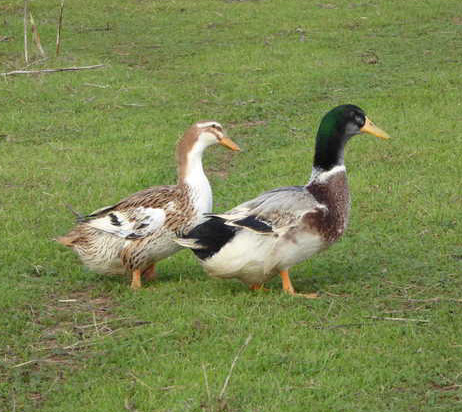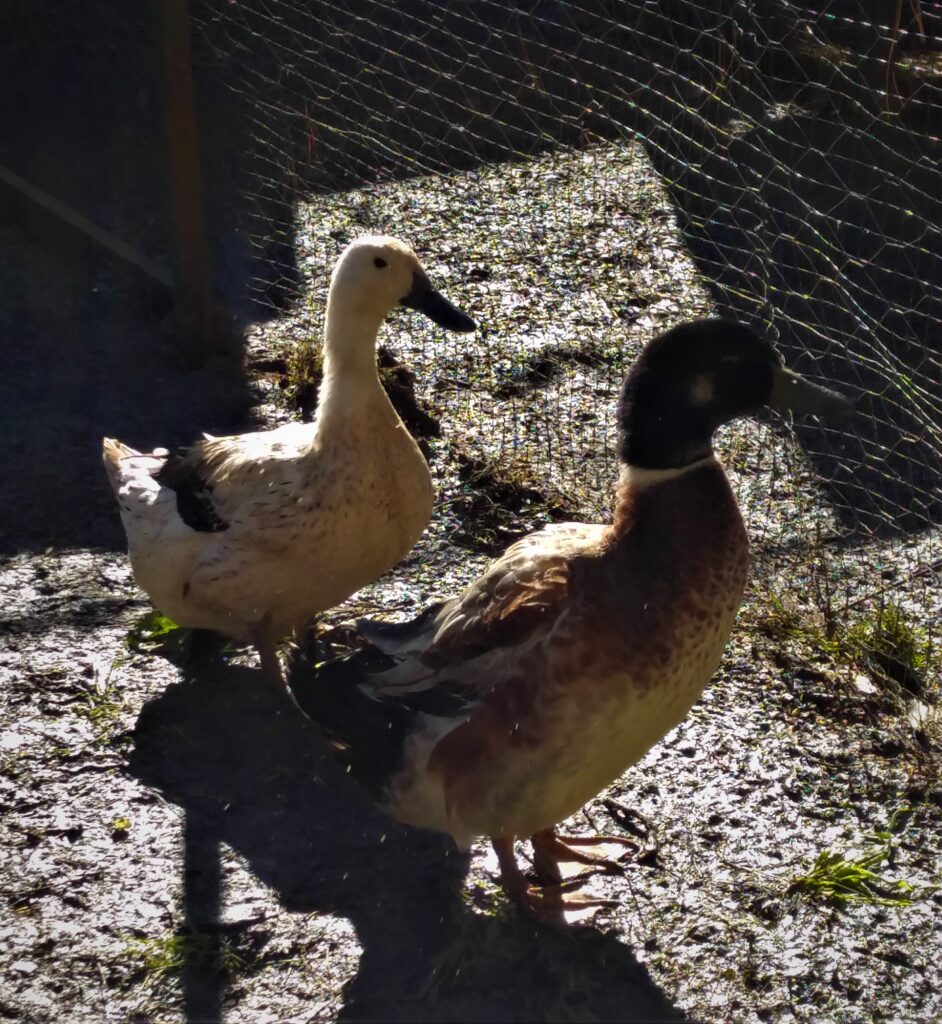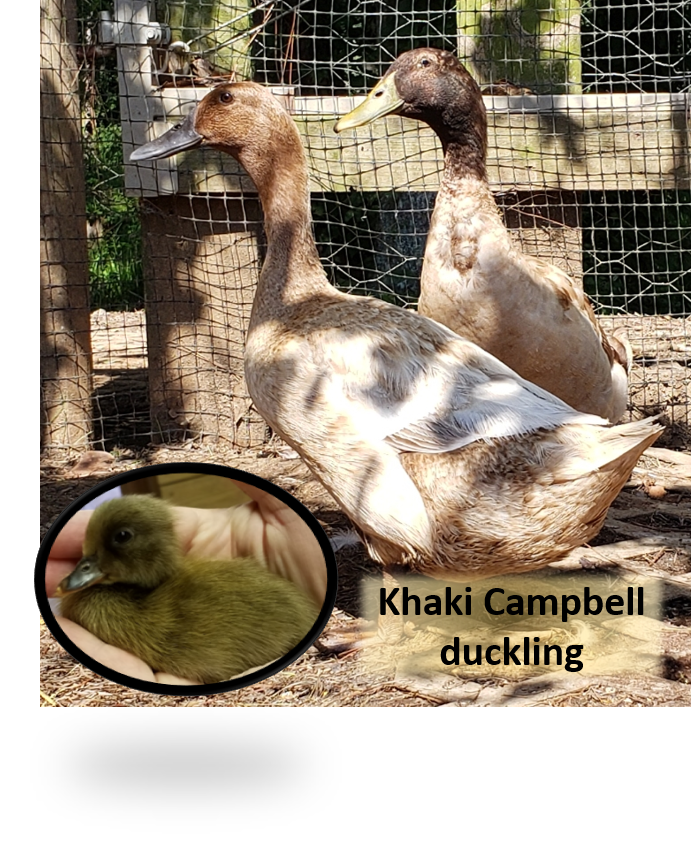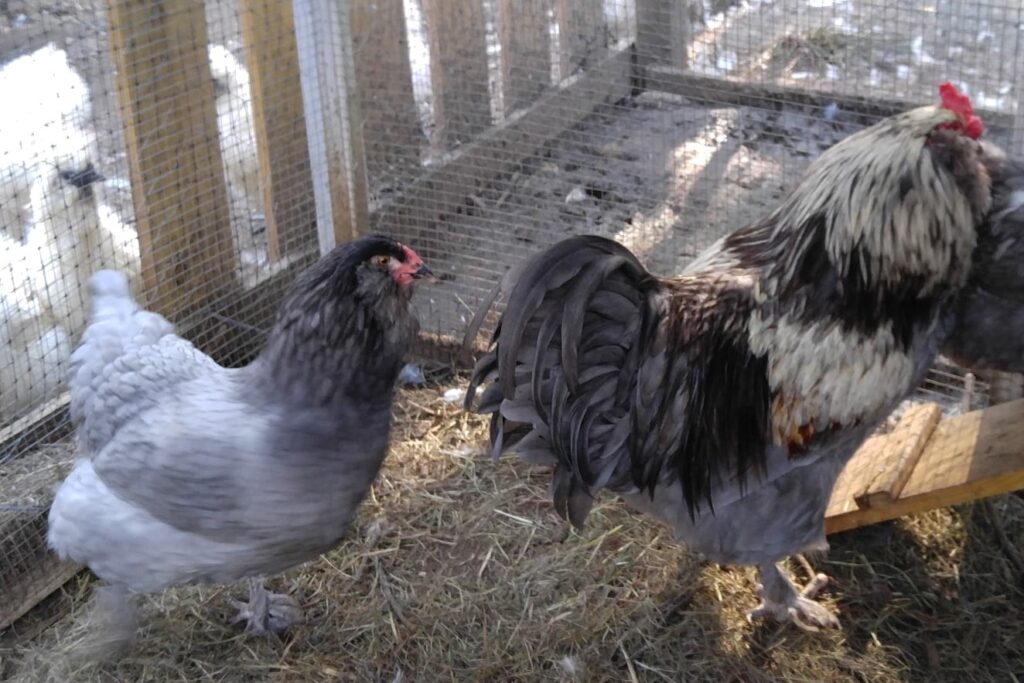
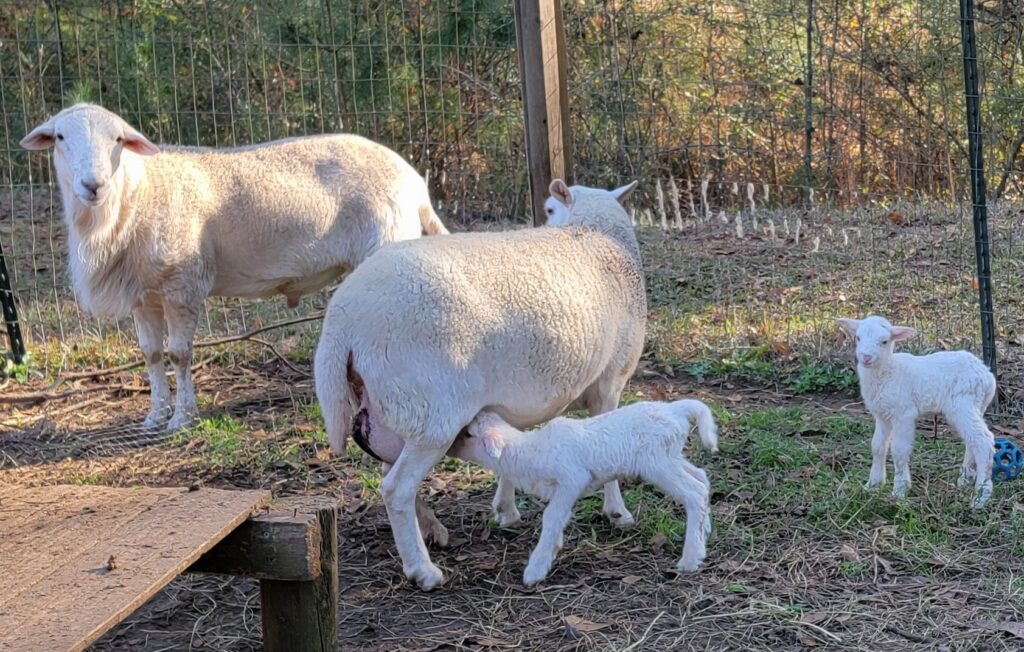
Live weight of a mature ewe in good condition usually ranges from 120-160 pounds; a mature ram will weigh 180-250 pounds. Average birth weight of twins is about 8 pounds. Ewes and rams exhibit early puberty and generally have a long productive life. Mature ewes usually have twins, occasionally producing triplets or quadruplets. A well-managed and selected flock should produce a 200% lamb crop. Rams are aggressive breeders, generally fertile year round, and can settle a large number of ewes in the first cycle of exposure. With selection a flock can consistently lamb throughout the year. The Katahdin ewe shows a strong, protective mothering instinct, usually lambs without assistance, and has ample milk for her lambs.
Lambs produce a high quality, well-muscled carcass that is naturally lean and consistently offers a very mild flavor. Lambs are comparable to other medium-sized maternal breeds in growth and cutability. Lambs are desirable for specialty markets at a variety of ages and weights, wethers are appropriate for conventional North American markets at 95 to 115 pounds.
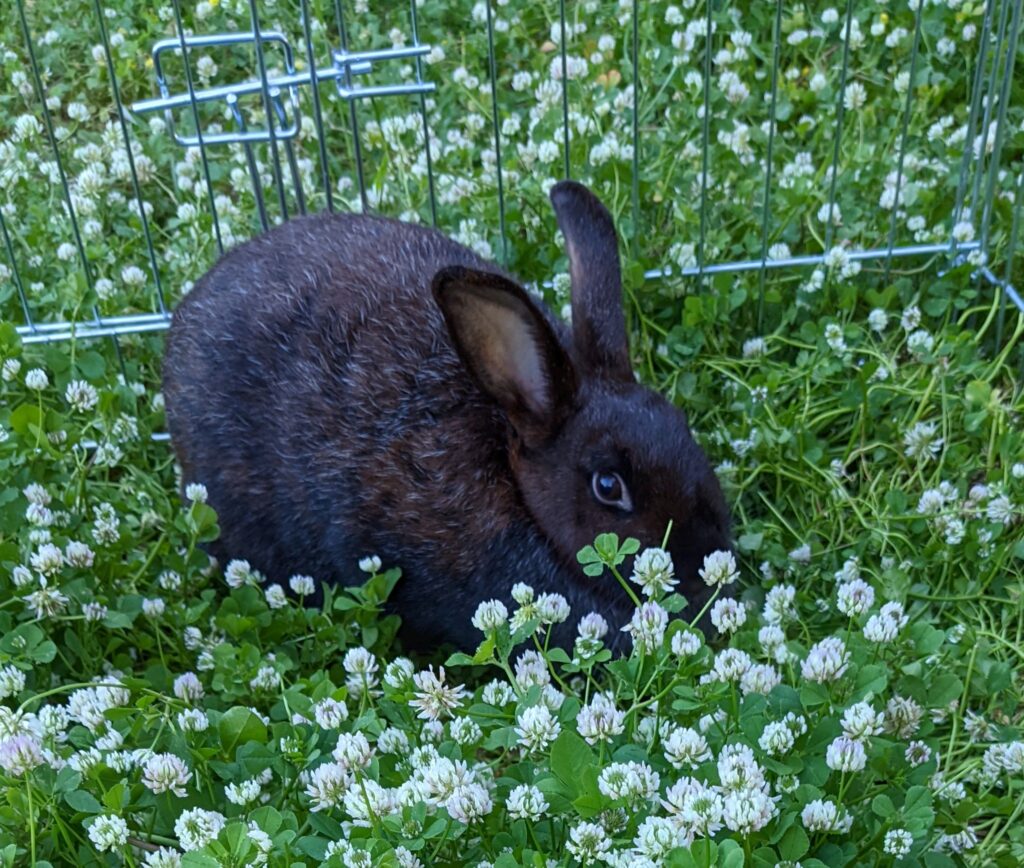
Like any other breed of rabbit, Silver Fox rabbits require a diet consisting of at least 70 percent hay. The rest of the diet is made up a healthy balance of pellets, leafy greens, fruits and vegetables.
Silver Fox rabbits are known to be gentle, docile pets and are also wonderful mothers and surrogate mothers.
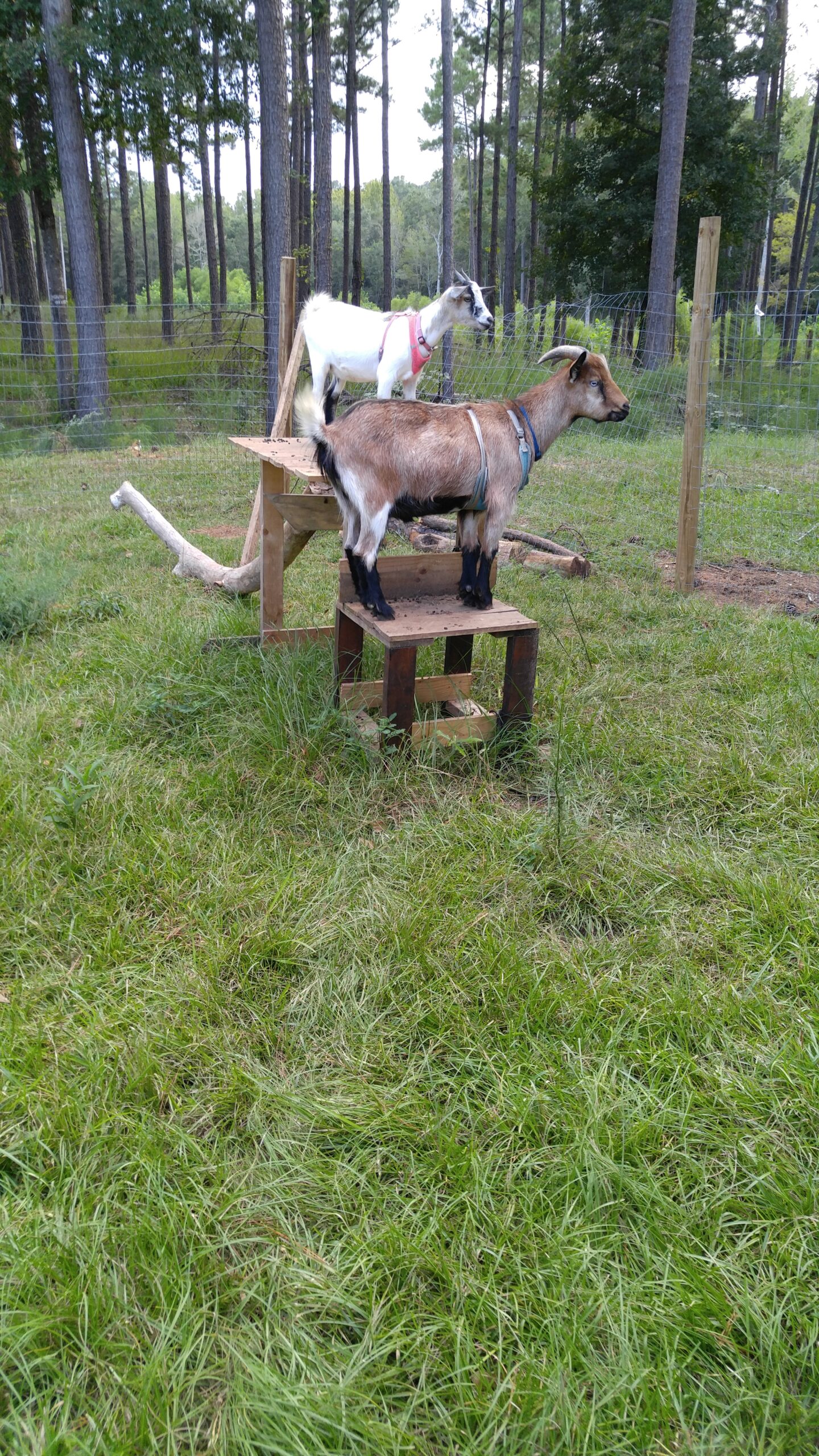
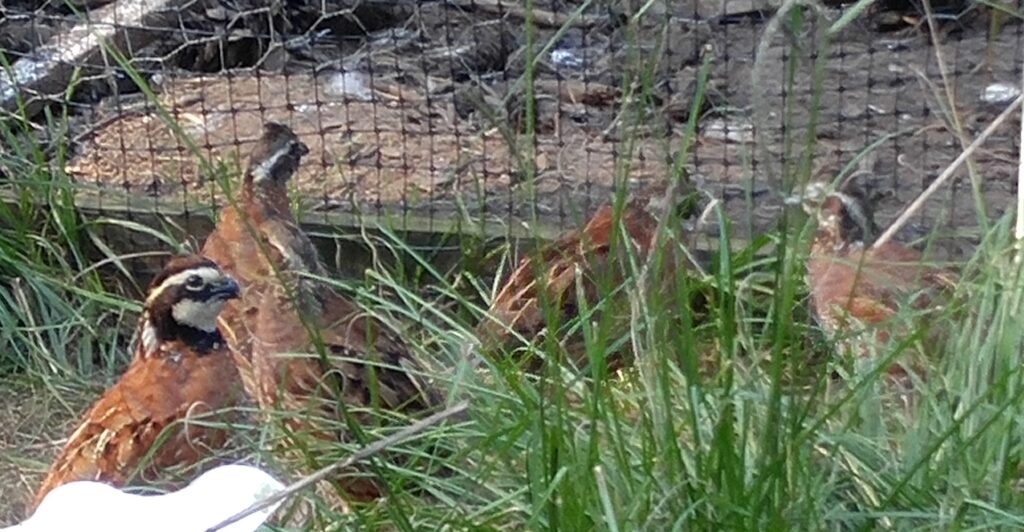
Males have a white throat and brow stripe bordered by black. Females are duller overall with a buff throat and brow without the black border. Either parent may incubate a clutch for 23 days, and the precocial young leave the nest shortly after hatching. Brooding behavior varies (kidnapping, adopting, creching, gang brooding). Bobwhite’s diet consists of plant material and small invertebrates, such as ticks, snails, grasshoppers, etc. Other sources include seeds, wild berries, partridge peas, and cultivated grains. It forages on the ground in open areas with some spots of taller vegetation.
Optimal nutrient requirements for bobwhite vary depending on the age of bird and the time of the year. For example, optimal protein and energy requirements for egg laying hens (23% protein) is much higher than males (16%). In the wild the northern bobwhite feeds on a variety of weed and grass seeds, as well as insects. Captive quail can be fed commercial small seed mix (finch, budgerigar, or small parrot mix) when supplemented with greenfeed. High protein foods such as chicken grower crumble are more convenient to supply and will be useful for the stimulation of breeding birds. As with all birds, extra calcium is required by laying hens. In captivity, hens will lay all over if a nesting site and privacy are not provided. Hens doing this may lay upwards of 80 eggs in a season which can be incubated. Hens with nesting cover that make a nest (on the ground) will build up 8–25 eggs in a clutch, with eggs being laid daily.
